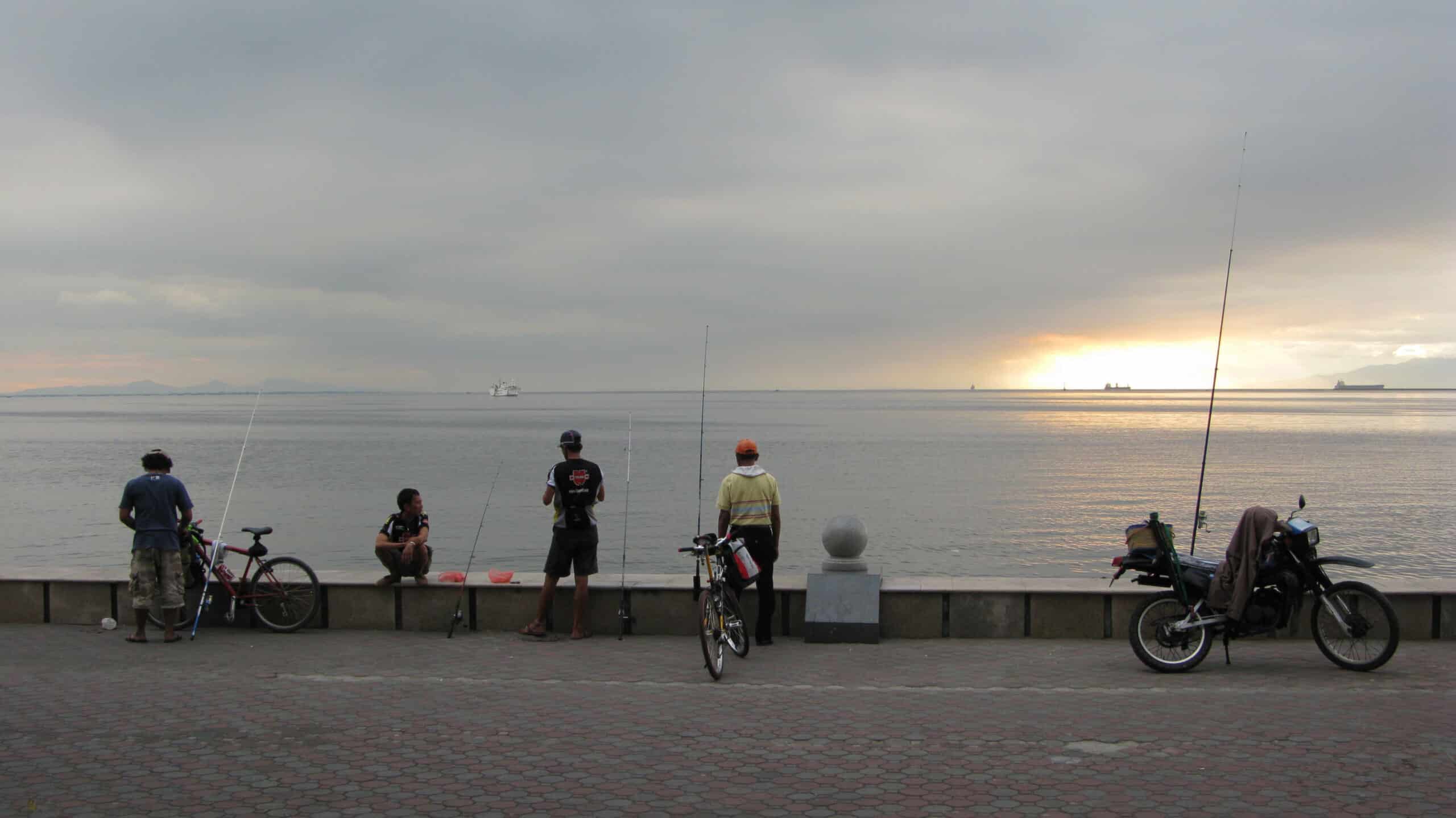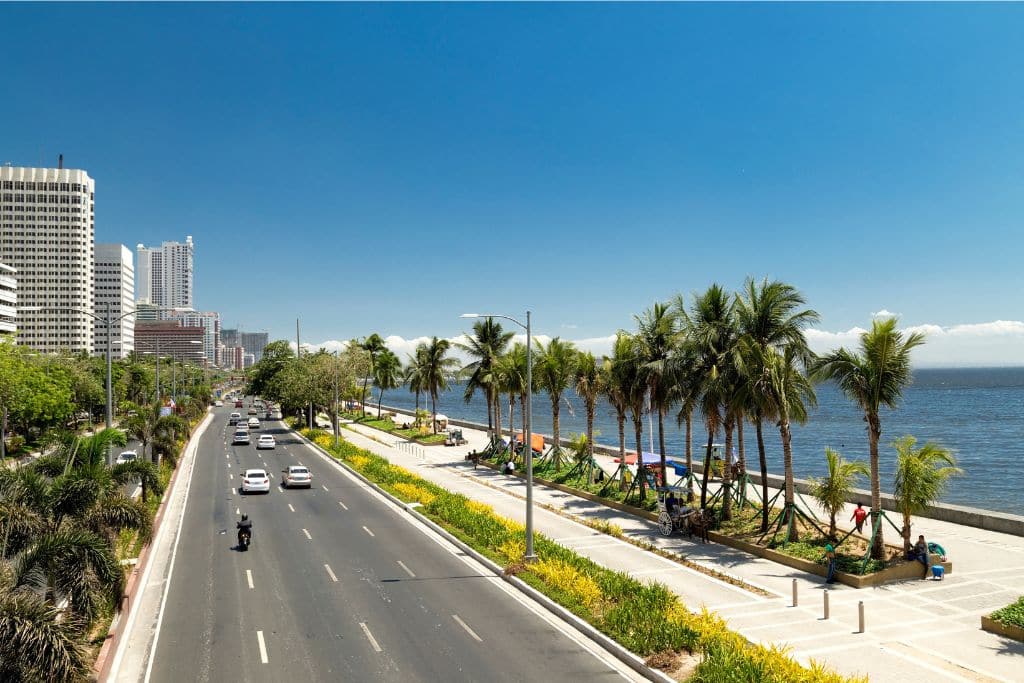Once donned as the hotspot for lucrative businesses and leisure, Manila Bay was the perfect beach getaway lying on the outskirts of Metro Manila in the Philippines. As time passed, heavy commercialisation brought grave environmental consequences, including coastal erosion and dwindling biodiversity. Eventually, in 2008, the Department of Environment and Natural Resources (DENR) was ordered to clean up Manila Bay in the span of 10 years. However, nearly two decades later, the bay’s water quality has only worsened following a series of reclamation projects. This article discusses the contradictory shifts between the reclamation and rehabilitation of Manila Bay.
—
The History of Manila Bay
From war boats to yachts, Manila Bay – a bay of the South China Sea extending into southwestern Luzon, Philippines – has been through many trials and tribulations of the nation. In its early days, the bay functioned as a bustling site for trade and commerce between Manila and nearby countries. It was also the main battlefield for historic events such as the 1898 Battle of Manila Bay between Spain and the United States.
Gradually, the bay evolved into a lively hub that attracted affluent citizens through commercialisation, booming with businesses that mirrored the likes of Miami in the United States.
However, this seemingly advantageous transformation eventually led to its untimely demise.
A Wake-Up Call for the Government
Last year, the Department of Environment and Natural Resources (DENR) warned about 2000 establishments for discharging wastewater into Manila Bay. Unfortunately, this pollution has been around for a long time.
In 2008, the bay’s water quality stood at around 5 to 8 million most probable number (MPN) per 100 millilitres (ml). MPN is a statistical method that estimates the number of viable cells of microorganisms in food or water. The standard coliform level for safe swimming is only 100 MPN per 100 ml.
On December 18, the bay’s concerning state prompted lawmakers to enforce the rehabilitation of Manila Bay, demanding the DENR to restore the bay’s healthy condition within the next ten years.
Instead of seeing improvements, the situation only worsened. Clinging onto the vestiges of Manila Bay’s long-gone prosperity, many impoverished citizens have migrated into makeshift huts in the area in hopes of earning money. However, more people means more waste generated in the areas surrounding Manila Bay’s waters. In 2019, the Department of Interior and Local Government revealed that as much as 80% of pollution in Manila Bay was generated by informal settlers.
As of January 28, 2019, one of the bay’s river mouths, the Rajah Soliman outfall, had a staggering 35 million MPN per 100 ml. Following water sample collections, the DENR issued a notice of inspection to around 100 businesses for releasing polluted water into the bay. This served as a wake-up call for the government to take immediate action.
On January 27, 2019, former President Rodrigo Roa Duterte ordered the launch of the “Battle for Manila Bay”. The action plan is divided into three phases – water quality improvement, rehabilitation and resettlement, and education and sustainment – and it discusses specific strategies such as relocating informal settlers, managing solid waste, and providing rehabilitation of old sewer lines.
“This is one battle that will be won not with force or arms, but with the firm resolve to bring Manila Bay back to life,” former DENR Secretary Roy Citamu said.
Government efforts have paid off. Four years after the implementation of the plan, the DENR revealed that the bay’s water quality has finally begun to improve. According to the Manila Bay Coordinating Office, the fecal coliform level in Manila Bay has decreased from 126,000 MPN per 100 ml in 2019 to 51,300 MPN per 100 ml in 2022.
While it is undoubtedly a big improvement, it is not big enough as it is still a far cry from the standard level of 100 MPN per 100 ml. Thus, it is important to note that the rather slow progress is not only a result of the difficulties related to treating waters. Rehabilitation works have also been affected by several government-approved reclamation projects that directly harm Manila Bay.
You might also like: How Did the Philippines Become the World’s Biggest Ocean Plastic Polluter?
Manila Bay’s Reclamation Projects
From seabed quarrying to dredging, Manila Bay has an overwhelming number of reclamation projects.
Reclamation is the procedure of creating new land from water bodies, where soil is transported to the water. The resulting land surface usually extends from the coastline and is above sea level.
According to the Philippine Reclamation Authority (PRA), 22 reclamation projects are currently planned in Manila Bay and half of them are already underway. Manila’s local government explains that reclamation is needed in order to accommodate the city’s other development projects.
Last year, the PRA also approved Waterfront Manila Premier Development Inc.’s request to avoid regulatory fees and directly embark on its 34.3 billion peso (US$616 million) reclamation project in Manila Bay. This highlights the lax regulations for major corporations, regardless of their environmentally problematic construction projects.
Another major reclamation project is the construction of the new airport. San Miguel Corp. (SMC) has been constructing the New Manila International Airport at the bay, which once completed in 2024, will be the biggest airport in the country. Subsequently, SMC has also been funding the construction of an expressway connecting the airport to the city of Manila.
The Adverse Effects of Reclamation
“My last resort is to tell anyone who wants to buy property on reclaimed land: Make sure you can get damage insurance,” said Kevin Rodolfo, a geologist and professor at the University of Illinois in Chicago.
The geologist further clarified that the reclamation projects at the bay could result in numerous environmental problems that might cause fatalities.
One such issue is land subsidence, which could occur due to the immense pressure from the weight of new buildings on the reclaimed land. Based on a 2014 study on the geological hazards of Manila Bay’s reclamation projects, Metro Manila’s coastal areas were found to be sinking by 9 centimetres every year. The coastal areas could eventually show signs of seismically induced liquefaction, where sediments near water act like quicksand. Dramatic storms and earthquake-induced ground shaking would also become more prevalent.
Aside from the long list of safety hazards, reclamation projects also disturb ecosystems, leading to economic disruption.

People fishing along the cleaner side of Manila Bay. Photo: Wikimedia Commons.
The environmental repercussions of reclamation projects also have a huge impact on fisheries industry in the bay, which, according to non-government organisation Oceana Philippines, account for 67% of Manila Bay’s total economic value.
Indeed, fishermen working in the bay noticed in recent years that the waters changed from transparent to murky and reddish, raising questions about the conditions of fish populations. They also experienced a decrease in the number of fish caught, threatening the state of the fishing industry and the economic status of Manila Bay.
The pollution brought by these reclamation projects could threaten biodiversity nearby the area. Contrary to popular belief, reclamation activities do not only harm marine life but also their habitats.
Mangroves are integral to combatting climate change as they absorb much more carbon dioxide than mountain forests. They also provide protection against floodwater. Unfortunately, between 1890 and 2016, a whopping 99% of the mangroves in the bay have been destroyed mostly by environmentally unfriendly behaviour. Such a drastic drop in mangroves results in the mass migration of fish and birds, generating a dramatic change in the ecosystem.
Can Rehabilitation and Reclamation Co-Exist in Manila Bay?
The PRA argues that the bay can have both rehabilitation and reclamation, explaining that other regions strategically reclaim land for the greater good. Indeed, cities like New York City and Mumbai perform reclamation to deal with the growing population.
However, most reclamation projects in Manila Bay are considered excessive and unnecessary. For example, the construction of the new airport does not serve the productive purpose of tackling overpopulation or land shortage.
Categorised as an integral biodiversity area by the DENR and other groups, Manila Bay needs to be recognised as a home to not only Filipino people but also an array of animals.
Furthermore, having no set guidelines for approving reclamation projects provides an opportunity for unfair or even corrupt transactions that undermine the gravity of Manila Bay’s environmental issues.
Reclaiming land could help provide more space for settlers but it will definitely cost the lives of many marine species. Consequently, economic industries tied to marine life will be threatened as well.
Instead of reclaiming an already polluted body of water, the government should completely devote itself to fully restoring Manila Bay. It should also focus on effective urban planning to relocate the bay’s informal settlers and ensure that there is not a trace of rubbish floating on Manila Bay waters.
There is only one way to preserve Manila Bay. It is not through continuous seabed abuse, nor is it through lax regulations – it is only through complete rehabilitation.
You might also like: 4 Biggest Environmental Issues in the Philippines in 2023


















